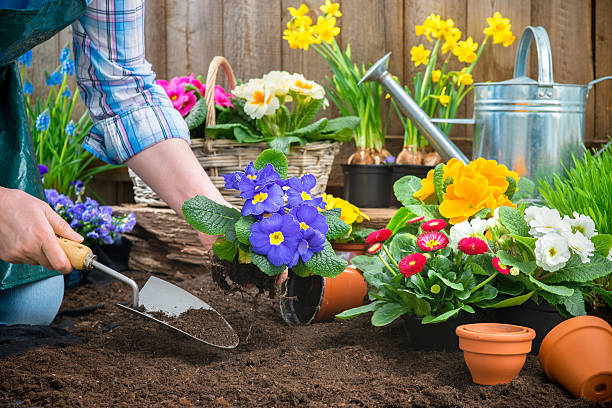We’re going to look at how to prepare flowers for winter, including which ones to dig up and how to store them.

Not all flowers that you grow in your garden can survive the winter outside. Many of them are sensitive to low temperatures, so you have to dig them up and store them indoors before the frost arrives. While some plants need to be looked after in early autumn, you can leave others in the ground until October. In this article, we’ll look at which flowers you need to dig up in September and how to prepare them for winter.
Which flowers need protection from frost?
The majority of plants we cultivate in our gardens are well suited to the local climate and can remain in the ground throughout the winter. However, some flowers are more sensitive to the cold and should be dug up before the first frost. These plants are often native to warmer climates, so they need to be moved to a suitable spot for the winter.
Some examples of hardy plants are tulips, daffodils, hyacinths and lilies. You can leave these flowers in the ground without worrying about anything. On the other hand, plants like Asian sparkleberries, gladioli, anemones and Oriental lilies are frost sensitive, so they need to be dug up.
Which flowers need to be dug up in September?
Some flowers should be dug in early autumn to avoid damage due to damp or frost. Some of the most sensitive flowers that need to be dug in September include:
- Asian sparkleberries
- Iksias
- Oriental lilies
- Gladioli
- Sparaxis
Conversely, some species, such as dahlias, begonias or freesias, can be left in the ground until October before being dug up and prepared for overwintering.
How to dig and store flowers properly?
Digging up flowers before winter is pretty straightforward, but it does require a bit of care. The main thing is to make sure you don’t damage the tubers, bulbs or underground parts of the plants, as injury can lead to desiccation or disease. It’s best to dig on dry days to avoid unnecessary moisture that could cause rot during storage.
Once you’ve dug up the soil, remove it and any damaged or dry plant parts. Any bulbs or tubers you’ve kept should be stored somewhere dry, like a cellar or garage, where the humidity and temperature are kept constant. Different types of flowers need different conditions – some like it cooler, while others prefer a slightly cooler climate.
During the winter, check on your stored plants regularly to remove any diseased parts and stop pathogens spreading. In spring, you can replant your prepared plants.

